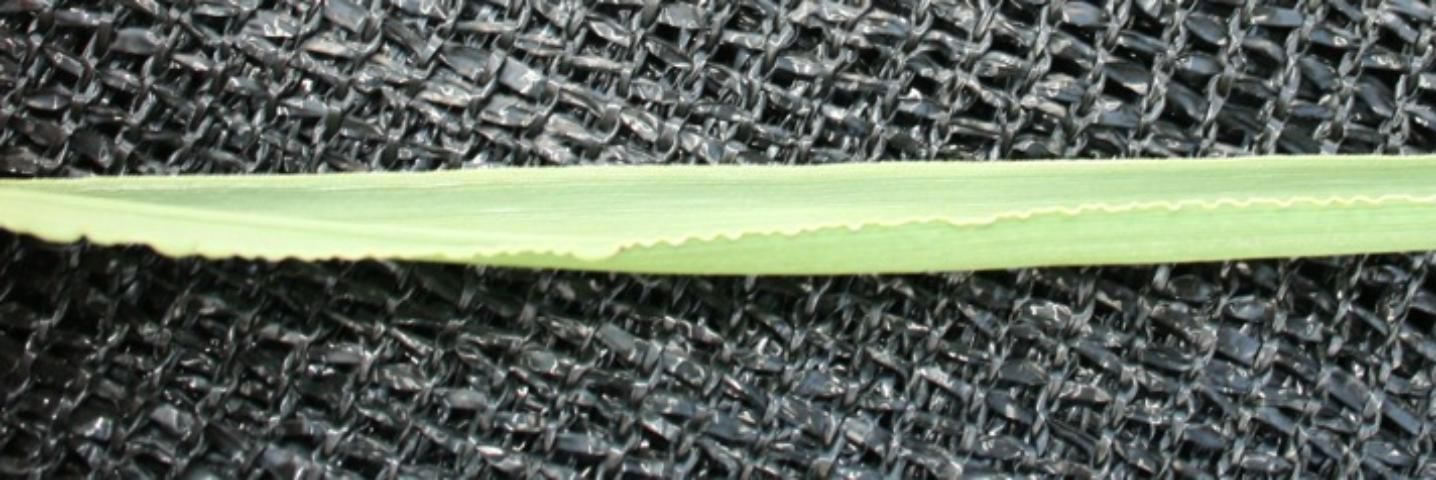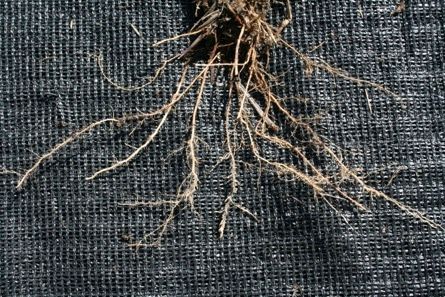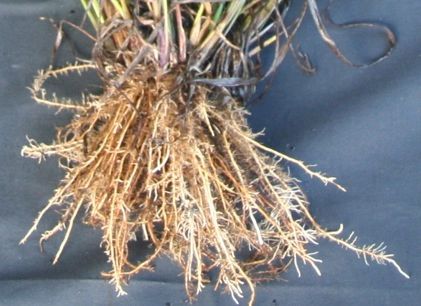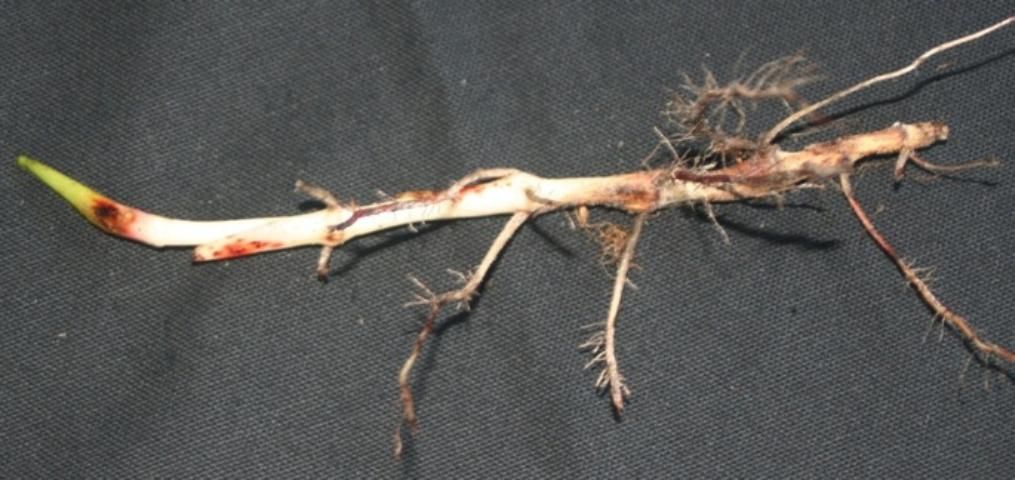Johnsongrass is a common perennial grass that grows throughout the South and Midwest. It is so common and well known as a troublesome weed that any large undesirable grass is often called johnsongrass. This is problematic because it is one of three perennial grasses found in pastures. Vaseygrass and guinea grass are often misidentified as johnsongrass, but they have very different herbicide recommendations. Calling a plant johnsongrass when it is really vaseygrass or guinea grass can result in the wrong recommendation and lead to an expensive herbicide failure.
Identification: Johnsongrass, Vaseygrass, Guinea Grass
All three grasses have a prominent white midrib that extends the length of the leaf. But few similarities exist beyond this characteristic.
Growth Habit
All three grasses are perennial, but only johnsongrass has a creeping rhizome system and grows in patches rather than in individual bunches. Vaseygrass and guinea grass are both bunch-type grasses without a significant rhizome system. Additionally, vaseygrass is most commonly found in wet fields or along drainage ditches. Johnsongrass and guinea grass prefer drier sites.
Seedhead
Johnsongrass and guinea grass have an open panicle seedhead that is angular. Color and size are the key differences between johnsongrass and guinea grass seedheads. Johnsongrass seeds are much larger and have a red/black mottled color, while guinea grass seeds are smaller and somewhat green. Vaseygrass has a very different seedhead with alternating spikelets forming silky hairs around the seeds. Seeds are produced along the entire length of the seedhead branch, which does not occur in johnsongrass or guinea grass seedheads.

Credit: Hunter Smith and Brent Sellers, UF/IFAS
Seeds
Guinea grass has small, oval, light green seeds, which often have wrinkles. Vaseygrass seeds have similar characteristics but are flatter, with the presence of hairs. Johnsongrass has much larger, pointed seeds that develop a reddish/brown tint as they mature.

Credit: Hunter Smith and Brent Sellers, UF/IFAS
Stems
The stems of johnsongrass and guinea grass can look very similar. Inspection of the stems will show scattered but abundant hairs along the stem of guinea grass. Stem hair on guinea grass varies because of the different biotypes. Johnsongrass stems are totally smooth with no hairs. Vaseygrass stems have hairs where the leaf meets the stem or on the stem toward the base of the plant. This is because vaseygrass will generally lose stem hairs as the stems elongate.
Leaves
Johnsongrass leaves have a large white midrib and a smooth, glossy appearance. Guinea grass leaves have a less prominent white midrib, and the undersides are rough with stiff hairs. Vaseygrass leaves are long and narrow with an indented midrib and crinkled leaf margins.

Credit: Hunter Smith, UF/IFAS

Credit: Hunter Smith, UF/IFAS
Roots
A fifth and final identification method is to pull or dig up the roots. All three of these grasses are perennial, but johnsongrass has large white rhizomes that are easily seen if the plant is well established. Vaseygrass and guinea grass have smaller, more fibrous root structures compared to johnsongrass.

Credit: Hunter Smith, UF/IFAS

Credit: Brent Sellers, UF/IFAS

Credit: Brent Sellers, UF/IFAS
Control
There are four active ingredients that are commonly used to selectively remove these unwanted grass species from our desirable forages including sulfosulfuron (Outrider), imazapic (Panoramic, Plateau, etc.), glyphosate (various products; be sure to check formulation to determine the appropriate application rate) and a premix of nicosulfuron + metsulfuron (Pastora). Specific recommendations for each grass species are described below.
Johnsongrass
Outrider: For best johnsongrass control, apply 1.33 ounces per acre when grass is actively growing and is at least 18–24 inches tall, up to the heading stage.
Panoramic (bermudagrass only): Use 4–6 ounces per acre on johnsongrass less than 24 inches tall. Higher rates can be used, but unacceptable injury on bermudagrass will likely occur. Although 4 oz of Panoramic can control johnsongrass, some regrowth should be expected on older stands that are large at the time of application.
Pastora (bermudagrass only): Use 1 oz/A on seedling johnsongrass (rhizomes < 18") and 1.5 oz/A on mature stands. Bermudagrass injury will occur with Pastora, but will be less than that observed with Panoramic. Maximum application rate of Pastora is 2.5 ounces per acre per year.
Vaseygrass
Panoramic (bermudagrass only): Vaseygrass control can be accomplished by using 6–8 ounces per acre. This rate of Panoramic will be highly injurious to bermudagrass, and one cutting of hay will likely be lost. This injury can be minimized if the application is made immediately after hay removal and before the bermudagrass leaf-out. Additionally, do not apply Panoramic until after the first hay cutting when rainfall is common.
Glyphosate: Spot spraying with 1% solution (1.2 oz/gal) can be effective. Care should be taken to avoid contact with desirable grasses.
Guinea Grass
Glyphosate: Spot spraying with 1% solution (1.2 oz/gal) can be effective. Care should be taken to avoid contact with desirable grasses.
An alternative approach to all three grass weeds is to apply glyphosate at 0.38 lb acid equivalent per acre. Since there are various formulations of glyphosate on the market, it is difficult to provide a rate in ounces per acre. However, if the formulation is a 3 lb acid equivalent as in Gly Star Plus, the application rate would be 16 oz per acre. Conversely, if the glyphosate product is formulated as Roundup Powermax III, the application rate would be equivalent to 11 oz per acre. This rate should be applied within 7 to 10 days after cutting; otherwise significant injury and yield loss should be expected.